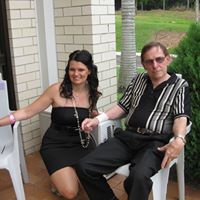Brian M Spinks
from Spring, TX
- Also known as:
-
- Brian Mcgarvey Spinks
- Phone and address:
- 5810 Evening Shadows Ln, Spring, TX 77373
Brian Spinks Phones & Addresses
- 5810 Evening Shadows Ln, Spring, TX 77373
- 11813 Barrington Way, Austin, TX 78759
- Raleigh, NC
- 2896 Wendell Rd, Wendell, NC 27591 • 919 365-3819 • 919 366-9447
- Kokomo, IN
Medicine Doctors

Brian A. Spinks
view sourceSpecialties:
Emergency Medicine, Family Medicine
Work:
Medexpress Urgent Care
5039 Peach St, Erie, PA 16509
814 866-1443 (phone), 814 866-1990 (fax)
Med Express Urgent Care
18471 Smock Hwy STE 107, Meadville, PA 16335
814 333-3627 (phone), 814 333-3638 (fax)
5039 Peach St, Erie, PA 16509
814 866-1443 (phone), 814 866-1990 (fax)
Med Express Urgent Care
18471 Smock Hwy STE 107, Meadville, PA 16335
814 333-3627 (phone), 814 333-3638 (fax)
Education:
Medical School
Lake Erie College of Osteopathic Medicine, Erie Campus
Graduated: 2001
Lake Erie College of Osteopathic Medicine, Erie Campus
Graduated: 2001
Procedures:
Electrocardiogram (EKG or ECG)
Pulmonary Function Tests
Vaccine Administration
Pulmonary Function Tests
Vaccine Administration
Conditions:
Acute Bronchitis
Acute Conjunctivitis
Acute Sinusitis
Acute Upper Respiratory Tract Infections
Allergic Rhinitis
Acute Conjunctivitis
Acute Sinusitis
Acute Upper Respiratory Tract Infections
Allergic Rhinitis
Languages:
English
Description:
Dr. Spinks graduated from the Lake Erie College of Osteopathic Medicine, Erie Campus in 2001. He works in Meadville, PA and 1 other location and specializes in Emergency Medicine and Family Medicine.
Us Patents
-
Thermostat And Remote Control System And Method
view source -
US Patent:20030034898, Feb 20, 2003
-
Filed:Nov 13, 2001
-
Appl. No.:09/987035
-
Inventors:Charles Shamoon - Raleigh NC, US
Deborah Shamoon - Raleigh NC, US
Brian Spinks - Wendell NC, US
Dale Dorsett - Raleigh NC, US -
International Classification:G05B019/02
-
US Classification:340/825720, 340/825240
-
Abstract:A thermostat and remote control apparatus, that is made up of a housing, an interface, a plurality of icons on the interface, corresponding to controls for items, a display screen, indicating the current temperature setting, time and date, a recessed program and enter button for entering temperature settings to a thermostat, a clear button for deleting any entered information, a cradle that is used to recharge the apparatus, a universal serial bus port (USB) connecting a computerized device to the apparatus, an RS-232 port to standardize a transmission of serial data between any devices and the apparatus, and a microcontroller for processing information and data. The apparatus utilizes infrared and radio frequency technology for transmitting and receiving information from various items. A controlled apparatus with a microprocessor (e.g., a child monitor) is also disclosed.
-
Edge Sense Latch
view source -
US Patent:42874424, Sep 1, 1981
-
Filed:Feb 26, 1979
-
Appl. No.:6/014797
-
Inventors:Brian M. Spinks - Austin TX
John R. Dumas - Round Rock TX -
Assignee:Motorola, Inc. - Schaumburg IL
-
International Classification:H03K 5153
H03K 3356 -
US Classification:307510
-
Abstract:An MOS logic circuit is provided which generates and latches an output signal at a given logic level upon detection of a given transition in an input signal coinciding with a given state of a clock signal. The circuit utilizes the capacitance inherent in an MOS structure. The circuit requires a minimum of MOS components and is therefore useful in high density MOS integrated circuits where it is desired to detect and latch a transition in a signal. The edge sense latch comprises an MOS inverter (Q1, Q2) responsive to an input signal S, a transmission gate (Q3) controlled by a clock signal, a transmission gate (Q4) controlled in part by an inherent capacitance (29), a latch comprising a pair of cross-coupled MOS transistors (Q5, Q8) for generating an output signal Q, and an MOS transistor (Q6) responsive to a reset signal R.
-
Sense Amplifier
view source -
US Patent:44233400, Dec 27, 1983
-
Filed:Dec 14, 1981
-
Appl. No.:6/330350
-
Inventors:Brian M. Spinks - Austin TX
-
Assignee:Motorola, Inc. - Schaumburg IL
-
International Classification:H03K 1730
H03K 17687
G01R 19165 -
US Classification:307530
-
Abstract:A sense amplifier having a conventional three transistor network for charging a column to a first predetermined voltage uses a depletion transistor to charge the column beyond the first predetermined voltage for detection of a memory cell which is in a non-conducting state. A memory cell in a conducting state draws enough current to prevent the depletion transistor from charging the column beyond the first predetermined voltage. A logic "1" is detected when the column charges beyond the first predetermined voltage to at least a second predetermined voltage, whereas a logic "0" is detected when the column does not reach the second predetermined voltage.
-
Programmable Timer Module Coupled To Microprocessor System
view source -
US Patent:41617878, Jul 17, 1979
-
Filed:Nov 4, 1977
-
Appl. No.:5/848558
-
Inventors:Stanley E. Groves - Round Rock TX
Gene A. Schriber - Austin TX
Brian M. Spinks - Austin TX
Richard M. Baker - Phoenix AZ
Thomas C. Daly - Dallas TX
Rodney J. Means - Manassas VA -
Assignee:Motorola, Inc. - Schaumburg IL
-
International Classification:G06F 918
-
US Classification:364900
-
Abstract:A programmable timer module (PTM) is provided as a component of a microprocessor system in order to generate and measure varying time intervals under program control. The programmable timer module includes, in one embodiment, three independent 16-bit timers. Each timer includes a 16-bit counter and a 16-bit latch. The programmable timer module also includes an 8-bit status register and an 8-bit control register each of which may be coupled to an 8-bit bidirectional data bus of a microprocessor system. Selection circuitry is provided which permits the microprocessor to select either the control register or the status register. Information can be written into the control register; the operation is effected by means of read/write circuitry and a read/write input. Any one of the three timers can also be selected by means of the selection circuitry, and a 16-bit number can be written into the selected 16-bit latch. Reset circuitry resets the counter whenever the 16-bit latch is written into, and the counter counts until it reaches the number written into the 16-bit latch, whereupon the interrupt circuitry generates an interrupt signal and sets an appropriate interrupt bit in the status register, and also resets that counter.
Name / Title
Company / Classification
Phones & Addresses
Principal
Spinks and Sons
Business Services at Non-Commercial Site · Nonclassifiable Establishments
Business Services at Non-Commercial Site · Nonclassifiable Establishments
2900 Bernardino Cv, Austin, TX 78728
Resumes

Brian Spinks
view source
Brian Spinks
view source
Brian Spinks
view source
Brian Spinks
view source
Brian Spinks
view sourceIsbn (Books And Publications)
-
Introduction To Integrated Circuit Layout
view source -
Author:Brian Spinks
-
ISBN #:0134854004
-
Introduction To Integrated Circuit Layout
view source -
Author:Brian Spinks
-
ISBN #:0134854187
Myspace

BRIAN SPINKS (sly) Myspa...
view sourceBRIAN SPINKS (sly)'s profile on Myspace, the leading social entertainment destination powered by the passion of our fans.
Classmates

Brian Spinks
view sourceSchools:
Westwood High School Austin TX 1982-1986
Community:
Jsozette Lillard
Googleplus

Brian Spinks
Work:
The Huffington Post - Director of Special Video Projects (2012)

Brian Spinks

Brian Spinks

Brian Spinks
view source
Brian Spinks
view source
Brian Spinks
view source
Brian Spinks
view source
Brian Spinks
view source
Brian Spinks
view source
Brian Spinks
view source
Brian Spinks
view sourceFlickr
Youtube
Get Report for Brian M Spinks from Spring, TX













